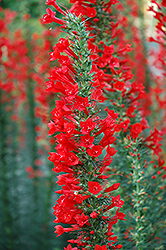Fri & Sat 8am - 8pm
Sun 8am - 7pm
Anytown, USA 12345
fax: 261.787.0463
e-mail: info@successgc.com


Plant Finder

Plant Height: 24 inches
Flower Height: 5 feet
Spread: 4 feet
Sunlight:
![]()
Hardiness Zone: 5b
Other Names: Gilia rubra, Red Texas Star, Texas Plume
Description:
An incredible native of the southern plains, considered biennial or marginally perennial; beautiful orange-red trumpets on long spikes will attract hummingbirds as well as your neighbors
Ornamental Features
Standing Cypress features showy spikes of scarlet trumpet-shaped flowers along the stems from late spring to early summer. Its ferny leaves remain emerald green in color throughout the season.
Landscape Attributes
Standing Cypress is an herbaceous perennial with a rigidly upright and towering form. It brings an extremely fine and delicate texture to the garden composition and should be used to full effect.
This is a relatively low maintenance plant, and should be cut back in late fall in preparation for winter. It is a good choice for attracting bees, butterflies and hummingbirds to your yard. It has no significant negative characteristics.
Standing Cypress is recommended for the following landscape applications;
- Mass Planting
- General Garden Use
- Naturalizing And Woodland Gardens
Planting & Growing
Standing Cypress will grow to be about 24 inches tall at maturity extending to 5 feet tall with the flowers, with a spread of 4 feet. It grows at a medium rate, and tends to be biennial, meaning that it puts on vegetative growth the first year, flowers the second, and then dies. As an herbaceous perennial, this plant will usually die back to the crown each winter, and will regrow from the base each spring. Be careful not to disturb the crown in late winter when it may not be readily seen!
This plant should only be grown in full sunlight. It does best in average to evenly moist conditions, but will not tolerate standing water. It is not particular as to soil type or pH. It is somewhat tolerant of urban pollution. This species is native to parts of North America.
